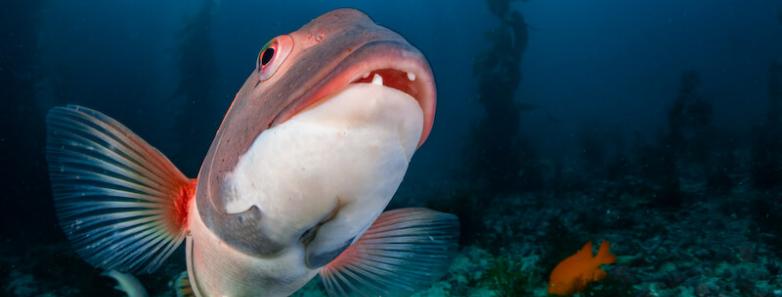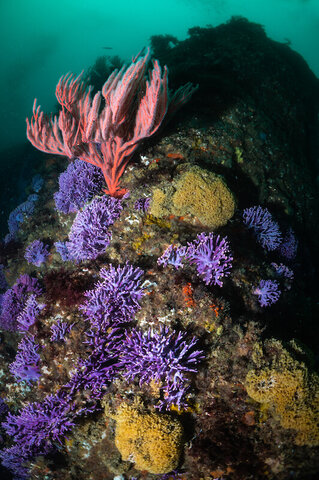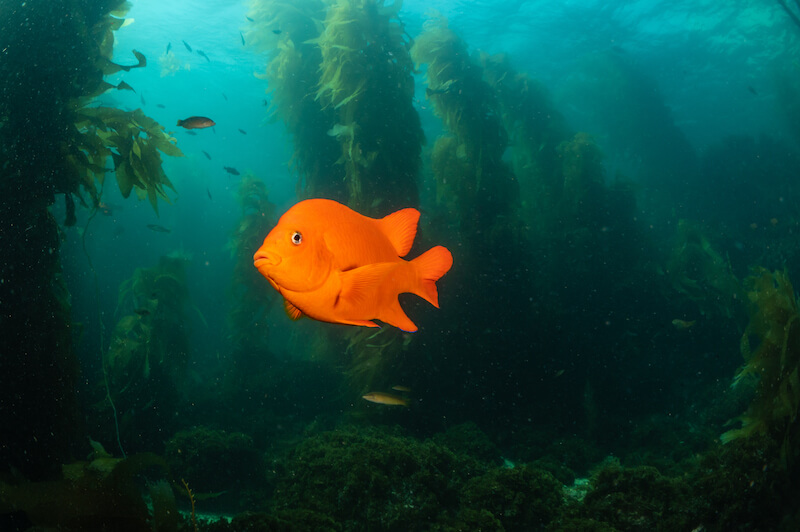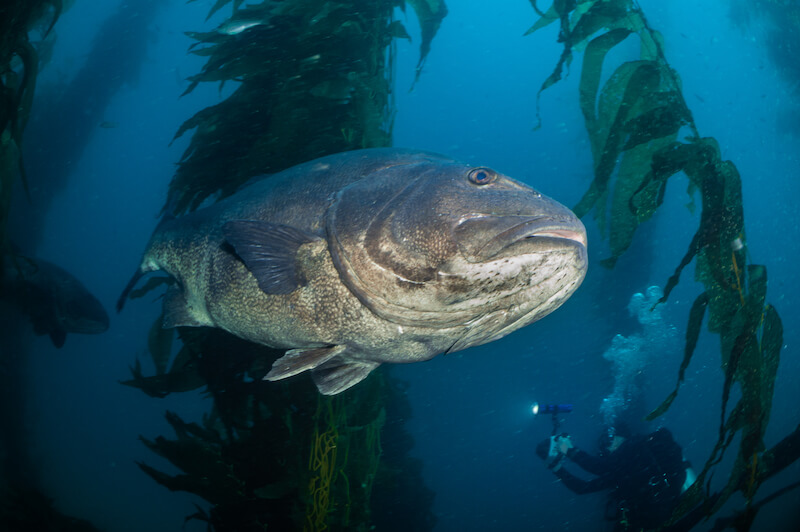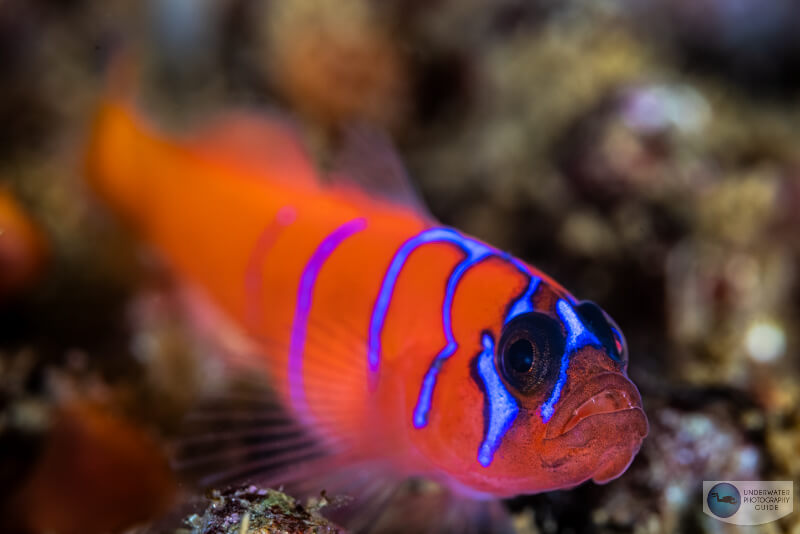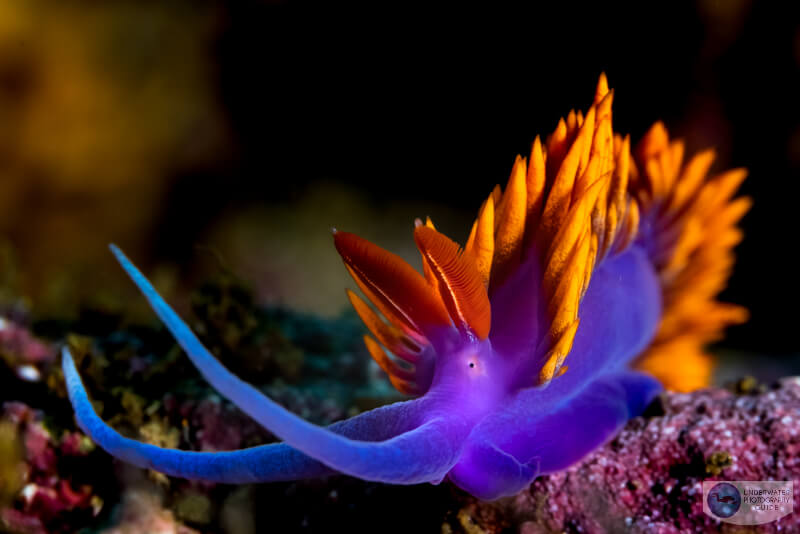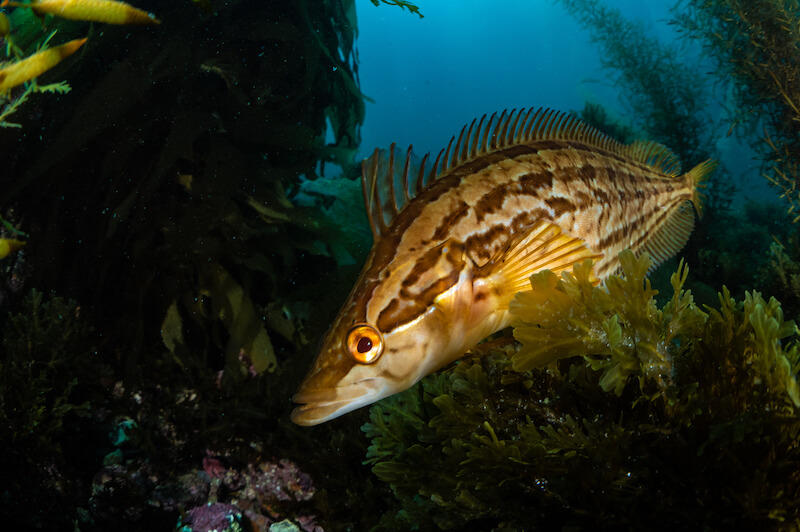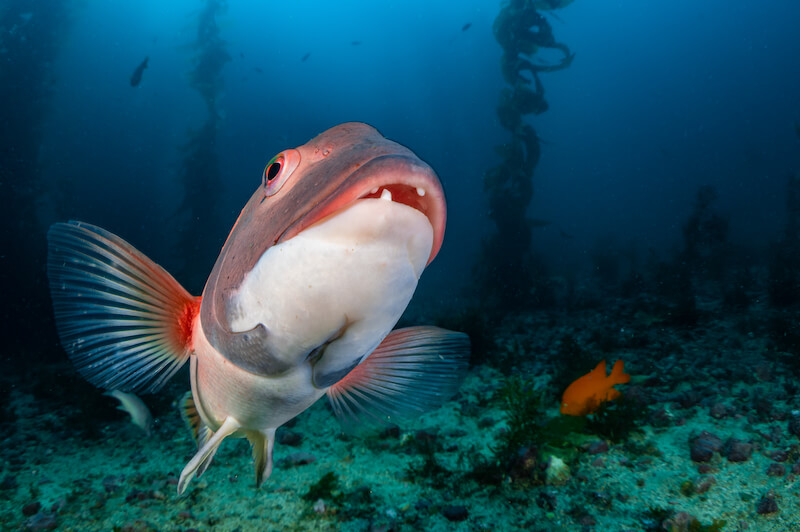Catalina Island Scuba Diving
Catalina Island Scuba Diving Highlights
Catalina Island is one of the most popular places to go scuba diving in Southern California thanks to its rich biodiversity, abundant marine life and accessibility. Giant kelp forests surround the island making the underwater landscape beautiful and other-worldly and an excellent place for underwater photography. If you’re looking for an unforgettable diving experience in Southern California, Catalina Island is the trip for you.
JUMP TO:
Introduction - When to go - How to Dive - Marine Life
Best Dive Sites - Diving Conditions - Travel Info
Introduction to Catalina Island Scuba Diving
The defining feature of any Catalina Island scuba diving experience is the giant kelp forests that shoot up from the ocean floor to the surface, often measuring up to 65 ft. The underwater forests play host to a diverse array of marine life, from angel sharks, horn sharks and leopard sharks to mantis shrimp, sea fans & anemones. You’ll also find plenty of octopus and moray eels hiding in cracks and crevices, and garibaldi and sheephead are plentiful too.
Diving in Catalina island is accessible for diving of all experience and certification levels, although hiring a dive guide is highly recommended if you aren’t familiar with the area or haven’t dived in a while. Water temperature ranges from the mid-50s to the mid-70s depending on the time of year you visit, and visibility usually sits around the 40 ft range depending on the conditions.
Getting to Catalina Island involves a short one-hour ferry ride from one of a few different departure locations, making Catalina Island one of the most accessible Southern Channel Islands for scuba diving.
There are many different dive sites around Catalina Island to suit all divers. Some sites are more suitable for Open Water Divers, some deeper sites for Advanced divers, some for underwater macro photographers and some are more suited for wide-angle photography. Read on for more on individual dive sites.
When to go scuba diving at Catalina Island
The diving season in Catalina Island is year-round; as long as you prepare for cold water diving in the winter months with a 7mm wetsuit or a drysuit, there’s no reason not to dive during the colder months. Peak scuba diving season is from mid-July to late September, when the water is warmest.
Check out the amazing video filmed while diving Catalina Island!
How to dive Catalina Island
The best way is to arrange a day trip with one of Catalina Island's local scuba diving operators. You’ll need to make your way to the island on one of the regularly scheduled ferries in the morning to ensure you have enough time to meet up with your chosen dive operator. Most operators will be able to rent you any equipment you need and will provide tanks and weights for free.
Best Catalina Island dive sites
Catalina Island is home to some of the most popular dive sites in Southern California. Depending on what you’re interested in seeing, we recommend checking out the following locations.
Farnsworth Banks
Farnsworth Banks is a seamount measuring 55 feet at the surface and is for Advanced Open Water divers and above only. You’ll get to see lots of purple hydrocoral and torpedo rays.
Ship Rock
Like many of the dive sites around Catalina Island, at Ship Rock, you’ll find kelp forests home to schools of fish and angel sharks. If you go deep enough and look on the rocks, you’ll also find plenty of nudibranchs.
Two Harbors Area
There are several great dive sites around the Two Harbors area which are perfectly suited to wide-angle underwater photography because of the giant dominating kelp forests. Some of the recommended dive sites in this area are Blue Cavern, Bird Rock, Sea Fan Grotto and Eagle Reef.
West End Cove
If good visibility is important to you, you’ll have the best chances of finding it at West End Cove, although the trade-off is occasional strong currents. Schooling jack, mackerel and seal are common. Yellowtail and mola-mola are less common but can sometimes be found.
Italian Gardens
One of the most commonly seen fish species around Catalina Island is black sea bass. During July, August, September and October, you’ll find many giant black sea bass at the base of the kelp forest.
Rock Quarry
Angel sharks and scythe butterflyfish can be found here, as well as healthy kelp forests to the east.
Long Point
Long Point is a wall dive with lots of schooling fish, sea fans, kelp forests and usually excellent visibility.
Eagle Rock
Eagle Rock, located on the west end of Catalina Island, is home to stunning sea fans and is one of the best dive sites for wide-angle underwater photography in the area.
Blue Cavern Point
Blue Cavern Point is a great wall dive not too far away from the Two Harbors area. Another dive site with often good visibility, there are lots of caves and caverns to explore and the opportunity for drift diving when the currents are strong.
Catalina Island Marine Life
Southern California is home to some of the most diverse marine life in the world, and Catalina Island is at the epicenter of it all. From thousands of fish species, nudibranchs, crustaceans and invertebrates to mammals and even bright coral, you can, if you’re lucky, see it all at Catalina Island.
Admittedly, you’ll have to get very lucky to see things such as humpback whales, but it can happen if you dive at the right time during the right season.
Some of the marine life you can expect to see diving Catalina Island are:
- Harbor Seal
- California Sea Lions
- Dolphins
- Humpback Whales
- Wolf Eel
- Giant Black Sea Bass
- Large Schools of Fish
- Pacific Seahorse
- Torpedo Rays
- Angel Shark
- Leopard Shark
- Nudibranchs
- Different Molluscs
- Different Crustaceans
- Sponges and anemones
Diving Conditions and Difficulty
The diving conditions around Catalina Island can vary greatly depending on which side of the island you’re diving on, but be prepared for occasional strong currents and, if you’re used to warm water diving, make sure you’re wearing a 7mm wetsuit or a drysuit.
Visibility is generally good, somewhere in the range of 30 to 40 feet, but it can be less during the warmer summer months because of the increased phytoplankton levels caused by the warm, nutrient-rich water.
Do you need a wetsuit for Catalina Island?
Yes, you will definitely need a wetsuit to dive around Catalina Island. Some people will be comfortable in a 5mm wetsuit during summer, but most will be better off in a 7mm wetsuit or a drysuit since the average water temperature in summer is in the mid-70s, and during the winter it is in the mid-50s.
Can I snorkel on Catalina Island?
Yes, there are a lot of great places to snorkel on Catalina Island. If you have your own mask, snorkel, fins and wetsuit, or you’re happy to rent the necessary gear, there are lots of really great spots you can go snorkeling, such as around the Two Harbors area and Casino Point Dive Park.
Or, if you’d prefer, you can book a guided snorkeling tour with a local operator who will know all the best spots to visit.
Are there sharks in the waters around Catalina Island?
While rare, it is possible to see sharks when diving Catalina Island. You’ll occasionally encounter blue sharks, makos, horn, angel, swell, and white sharks, although white shark sightings are rare.
Is Catalina Island Water Clear?
The best time for visibility is during the months of September, October and November, when it can get to 50-60 feet. The yearly average is around 40ft, and it can drop to as low as 20ft in summer when there is a particularly heavy phytoplankton bloom.
Is it worth staying on Catalina Island?
Most people who visit Catalina Island go for day trips, but if you want to spend some time exploring the island before or after a day of diving, there are some great options available.
Avalon and Two Harbors are the two main towns on Catalina Island, about two hours apart from each other. If you want to stay on Catalina Island, look for accommodation options in one of these two towns.
Catalina Island Travel Information
How to get to Catalina Island
Regularly scheduled ferry services run from the Southern Californian cities of Dana Point, San Pedro, Long Beach and Newport Beach to Avalon and Two Harbors. The journey takes roughly an hour and round-trip adult tickets start from $77.
Topside Activities
Catalina Island is home to an excellent golf course, stunning beaches and great hiking trails if you’re looking for other activities to do while on the island. There are also museums and amazing restaurants to try out.
The Catalina Casino, which William Wrigley Jr. commissioned, sits on a small peninsula and is also a popular place to visit with tourists. While it’s not the gambling venue you might first think (it’s an event space and theater), you can book a tour of Catalina Island’s most historic building, built by the same man who founded Wrigley’s gum.
PRACTICAL INFORMATION
- Currency: US Dollar
- Language: English
- Main Airport Code: LAX
- Time Zone: UTC-8
- Electricity: 120 V 60 Hz
Interested in going diving in Catalina Island? Contact us for booking or more information.

